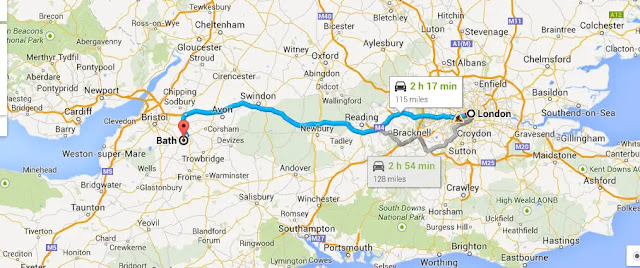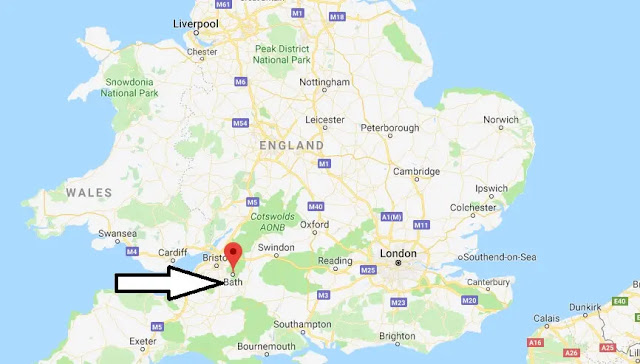
Is Bath (England) worth visiting? Things to do in Bath
Discover Bath - Bath is famously associated with literature and there are numerous plaques throughout the city to commemorate the literary residents throughout history. Find out what you can do and see in Bath with airGads.com and then book flights, car rental and hotels in England using our site's easy system.
Bath is England's famous Spa city with a rich and afleunt history. In the early eighteenth century, the socialite, Beau Nash turned Bath into a fashionable playground for high society to 'take the waters' and enjoy the town's theatres and concert rooms.
The stunning Roman Baths have remained unchanged for 2000 years and are one of the most complete ancient sites in the world. Bath has been designated by UNESCO as a World Heritage Site, and presents some of the finest architectural sights in Europe, namely the Royal Crescent, Pulteney Bridge, the Circus and the towers of Bath Abbey.
It was the renowned architect, John Wood who laid the foundations for a new Georgian city to be built using the honey-coloured stone that gives Bath its distinct mellow quality.
How far away is London from Bath?
London is only 2 hours 17 minutes and a quarter from Bath by InterCity (trains run hourly during peak periods) and Bristol is only fifteen minutes away.
Why is the city of Bath famous?
Bath is the perfect destination for those seeking quieter retreats. The County of Bath & North East Somerset is sandwiched between two Areas of Outstanding Natural Beauty with the Cotswolds to the north and the Mendips to the south-west. Also within easy reach is the coast at Weston-super-Mare or South Wales.
Where in the UK is Bath?
Bath is a compact city, set in a valley, surrounded by seven hills and is therefore ideal for walking and cycling. Perhaps you are simply seeking out that perfect country pub? Well, you will be pleasantly surprised by the lakes, villages and valleys that you can discover en-route! In partiular, the villages of Castle Combe or Lacock are certainly worth the detour, where you will find that every house is at least 150 years old!
Bath is a city of great beauty located on the River Avon among the hills of England's West Country. The Roman Baths have been rated one of the UK's top five attractions, but are by no means the only reason to visit Bath. Bath has also dozens of museums, and its streets are a living museum of Georgian architecture. The city's population is 85,000.
In recent years, Bath has established a young and vibrant student culture which juxtaposes the ancient and prestigious overtones of the city, creating an warm and welcoming atmosphere. From the historic to the utterly modern, all in all, the city has something for everyone, offering a diverse range of fascinating places to visit.
1. The Royal Crescent
Royal Crescent is a period 18thC Town House with an authentic feel of past times, adorned with period decorations and furniture. The house offers a glimpse of how wealthy residents lived in Georgian society and has been fully restored by Bath Preservation Trust. See Page 2 for more information on the Georgian architecture of the Royal Crescent.
2. the Museum of Costume
The Museum of Costume has one of the finest collections of clothing from around the world, spanning the last 400 years up to the modern day. Located in the basement of the Assembly Rooms in Bennett Street, the museum specialises in clothing and accessories from Bath's Georgian era. The displays include more than 150 dressed figures.
3. The Circus
The Abbey dominates Bath's skyline. The imposing Abbey, now over 500 years old, was built on the site of a Saxon monastery. It has some of the finest fan vaulting in the country, and some beautifully restored stonework. The Abbey frequently plays host to organists, choirs and orchestras as part of the Bath Festivals programme, and lunchtime concerts.
Round the corner from the Royal Crescent on Brock Street lies the Circus, designed by John Wood the Elder, but completed, after his death in 1754 by his son. It has been described as resembling the Colosseum turned inside out, and is made up of three crescents, each of thirty-three houses. The columns on the façade show the three styles of classical greek architecture, Doric, Ionic and Corinthian and the frieze represents science and the arts.
4. Bath Abbey
The Heritage Vaults Museum beneath the Abbey tells the story of 1600 years of Christianity in Bath, and is also well worth a visit, especially ifyou are interested in archaeology - there are several finds on display from excavations which uncovered Saxon and Norman stonework, as well as an 800 year old skeleton of a woman, believed to have been an important benefactress.
Sally Lunn's Museum and restaurant is situated in North parade Passage and is the oldest house in Bath c.1482. It is named after the 17th-century baker who first created the famous buttery tea bun, which is synonymous with Bath afternoon tea. The buns are still available fresh daily, but the recipe remains a secret.
Building of Bath Museum in the Countess of Huntingdon's Chapel on the Paragon, is an opportunity to see how the City of Bath was transformed from a small provincial spa town into Georgian city of splendour. It covers a period of 100 years and there are many surprises behind the elegant facades of Georgian Bath.
5. The Jane Austen Centre
The Jane Austen Centre is a new permanent exhibition offering the visitor an opportunity to experience what it was like for Jane Austen living in Bath in the early 19th Century and how it influenced her writing.
6. Roman Baths
A modern day version of the original grand Roman Baths is the brand new Spa Complex, which uses the healing thermal waters that bubble up beneath the city.
It is not the first though to re-invent the idea - several hotels already have spas and leisure facilities where you can pamper yourself, and there is a growing network of complementary therapists and beauty technicians in the city if you intend to make your visit to Bath a true retreat.
7. new spa complex
A spectacular new spa complex is the talk of the town with its breathtaking open-air, rooftop thermal pool, the result of a restoration project to restore five important heritage buildings. It is be the only place in England where you can bathe in natural thermal waters.
8. the sweeping Georgian terraces
Some of the most important sights in Bath are the sweeping Georgian terraces of the Royal Crescent and Circus, which are fine examples of the striking architecture characteric of Bath. The Royal Crescent was designed by John Wood the Younger and completed in 1767 and is a majestic sweep of 30 houses behind 114 Ionic columns.
9. Thermae Bath Spa
The city has many art galleries and various works of art are permanently on display at the Victoria Art Gallery, at the University-run Holburne Museum. Bath is also home to the gallery of the Royal Photographic Society and museums of Naive Art and East Asian Art.















